General goal
Towards the creation of next-generation information and communication network technology that contributes to solving social issues
In our modern society, information and communication networks have become indispensable as a basic infrastructure that supports people’s lives and economic activities. These networks, which also include the Internet, are used in various fields, such as online meetings, cloud computing, and remote medical care, and cause a major impact on the way we live. In the future, we expect that the configuration and operation of networks will become even more advanced as next-generation communication technologies become more widespread. Within this context, our research laboratory aims to realize high-performance and highly reliable communication, focusing on theoretical approaches for the design and implementation of network protocols. Through mathematical models and computer simulations, we logically analyze problems in real communication environments and propose corresponding solutions. With our research projects, we aim to contribute to solving social issues, such as building a resilient communication infrastructure that can handle disaster events and realizing a green network that takes energy efficiency into consideration. Our goal is not just achieving technological innovation, but also playing an important role in realizing a sustainable society.
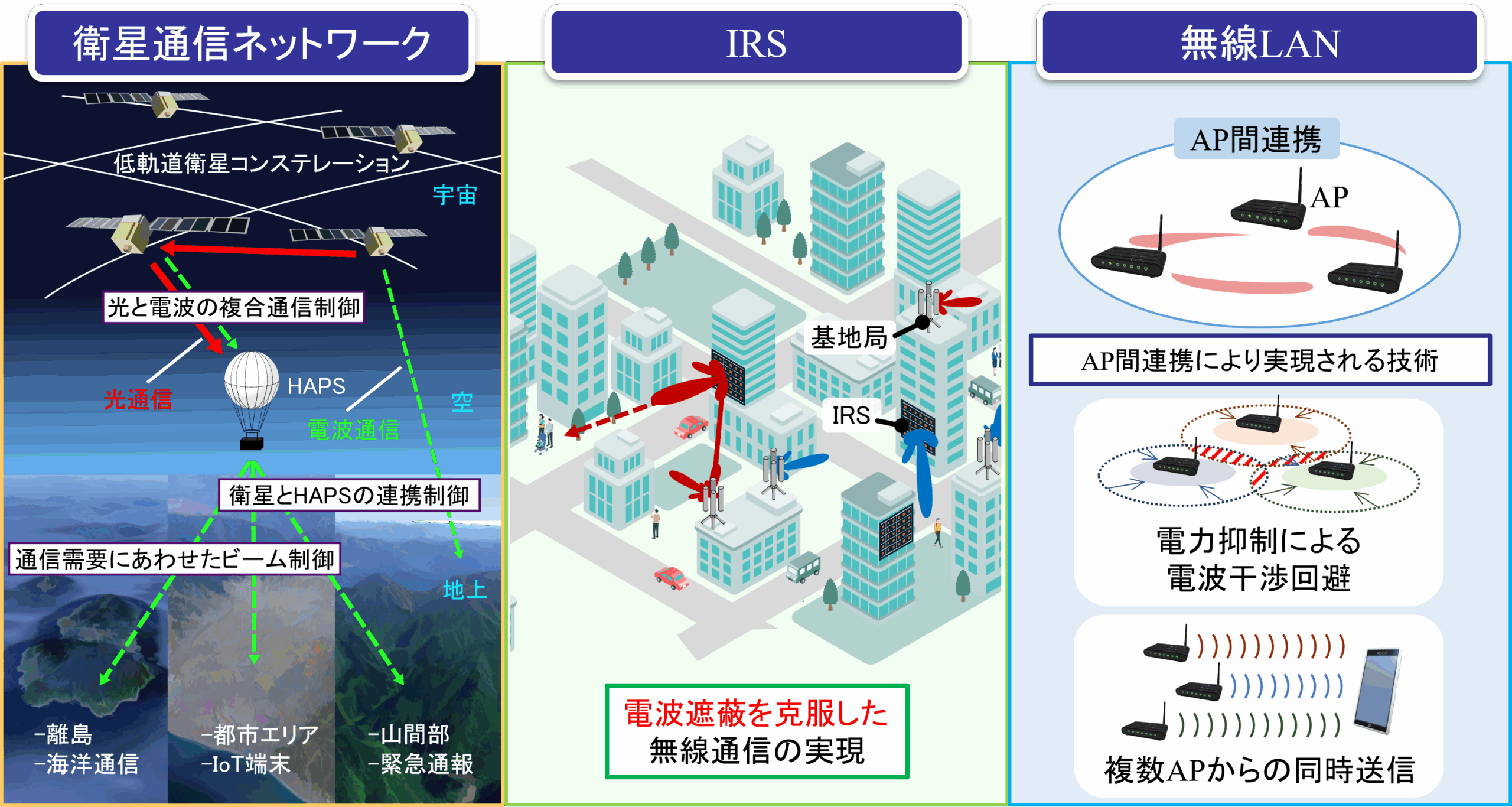
- Satellite networks
- Space-Air-Ground Integrated Network (SAGIN), Optical satellite communication, High Altitude Platform Station (HAPS), Satellite constellation, Lunar-orbiting satellite network, Satellite/Site diversity, Engineering Test Satellite-9 (ETS-9), Satellite/Terrestrial integrated mobile communication system (STICS), Multi-Layered Satellite Networks (MLSN), High Throughput Satellite (HTS)
- Intelligent Reflecting Surface-aided communication systems
- Intelligent Reflecting Surface (IRS), Reconfigurable Intelligent Surface (RIS), Stacked Intelligent Metasurfaces (SIM), Metasurface, Static Metasurface, Channel Estimation, Codebook, Beam Training, Beam Squint, IRS Dividing Control, Near-Field Communications, Infrastructure Sharing, Calibration, Beyond 5G, 6G
- Next-generation wireless LAN
- Wireless Local Area Network, Multi Access Point Coordination, Wi-Fi7 (802.11be), Wi-Fi8 (802.11bn), Coordinated-Spatial Reuse, Coordinated-Beam Forming, Coordinated-Orthogonal Frequency Division Multiple Access, High density Access Point System, Sharing/Shared Access Point
Focus areas
Satellite networks
In the Beyond 5G era, where further evolution of IoT is predicted, communication demands are expected to expand not only in areas with high user density but also in environments with low user density, such as rural regions, airspace, and high seas. As existing terrestrial networks by themselves will struggle to handle the expected growth in communication demands, large-scale satellite networks (such as low-orbit satellite constellations that provide global coverage) and High Altitude Platform Stations (HAPS, which are unmanned aerial vehicles in the stratosphere that serve as base stations) are attracting great attention as means to complement ground infrastructure. However, to efficiently integrate large-scale satellite networks and terrestrial networks and improve network utilization efficiency, various challenges must be addressed. Examples include frequency interference within the system, frequency sharing between nodes, links with long latency in space communications, satellite mobility, and network utilization costs. Our research group aims to realize an integrated space-air-ground network where non-terrestrial networks and ground infrastructure interact and coordinate with each other. Our efforts include mathematical modeling and investigating AI-based network control.
Specific research topics are as follows.
- Bundle aggregation and forwarding order control in DTN-based Near-Earth satellite networks
- Coordination among multi-site ground stations in global satellite networks
- Communication mode switching in hybrid free-space optical (FSO) and wireless satellite networks
- Reducing service latency in distributed green datacenters via optical satellite links
- Low-latency control of exploration probes via edge computing in Lunar-Orbiting networks
- Low-latency packet transmission in satellite networks applying diversity techniques
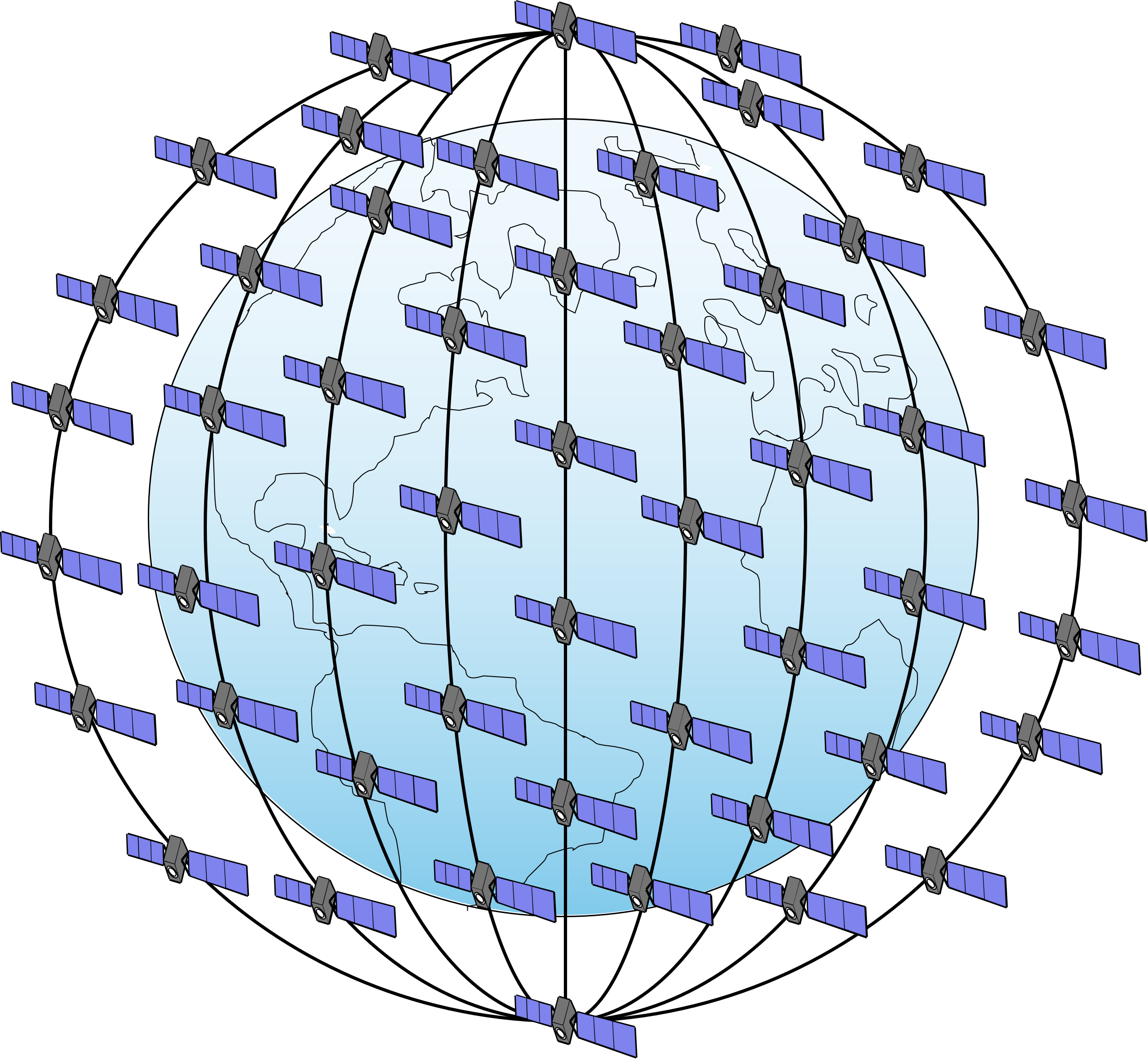
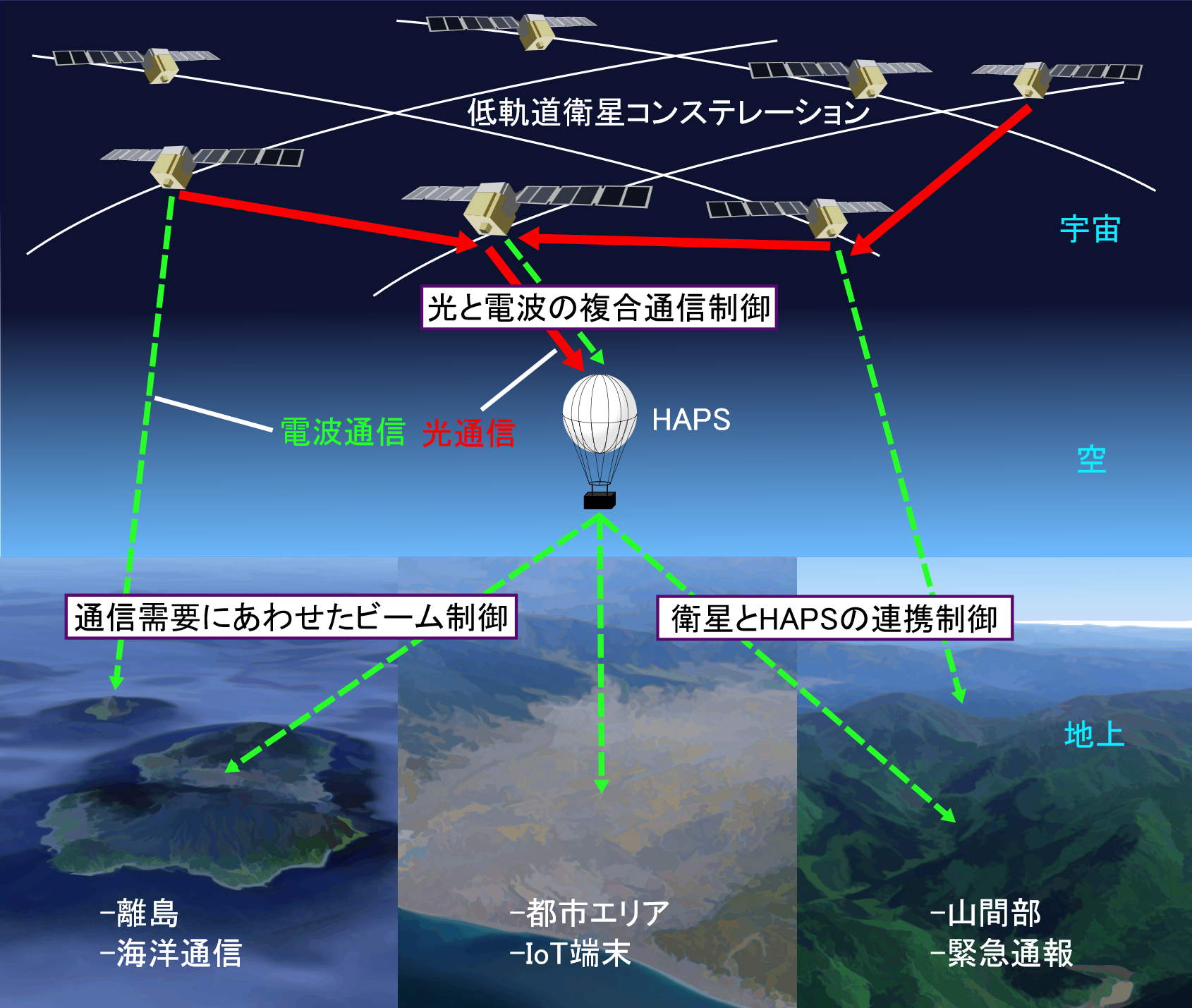
Intelligent Reflecting Surface-aided communication systems
The development of transmission technologies, such as antennas and access control, has dramatically improved the performance of wireless communications. This steady improvement makes mobile communication systems go through significant advancements every few years. For example, the communication performance of the 5th generation of mobile communication system (5G), which started operation in Japan in 2020, is expected to be tens of times higher than 4G, which started in 2015. However, it is often argued that the growth of wireless communication technologies is gradually reaching its limit. One of the bottlenecks to this growth is that physical obstacles between the base station and the communication device makes transmission unstable. Even with more advanced wireless technology, if the radio waves are blocked, communication is not possible. A new way to envision and design wireless communications system is needed to circumvent this limitation and cause a paradigm shift in wireless communication technologies. Enter the IRS, which is an electromagnetic wave reflector composed of a number of passive reflective elements composed of dynamically changeable metamaterials. By appropriately modifying the reflection characteristics of each element and designing an ideal radio wave propagation route, it is possible to bypass obstacles and provide communication services that are not affected by blockage. In this research area, we are pioneering basic theories and designing a new communication controlling algorithm to realize IRS-aided communication systems. The photo below shows our measurement experiment testbed using the IRS device produced by “Panasonic System Networks R&D Lab. Co., Ltd.”.
Specific research topics are as follows.
- Machine learning-based infrastructure sharing and shared operations for IRS-aided communications
- 3D codebook construction strategy for IRS-aided near-field communications
- Standalone-IRS control method using hierarchical exploration by beamwidth expansion and environment-adaptive codebook
- Simultaneous multiple connections and increased frequency efficiency using beam squint approach for IRS-aided communications
- Frequency prism beamforming with delay-adjustable IRS in LEO satellite networks
- Dividing control scheme for IRS towards the simultaneous multiple connections
- Codebook optimization for efficient exploration using two frequencies
- Environment-aware beam selection for efficient codebook design in IRS-aided communications
- Optimal control of shared IRS considering frequency response
- Calibration by estimation of incident angle error and installation angle error of IRS
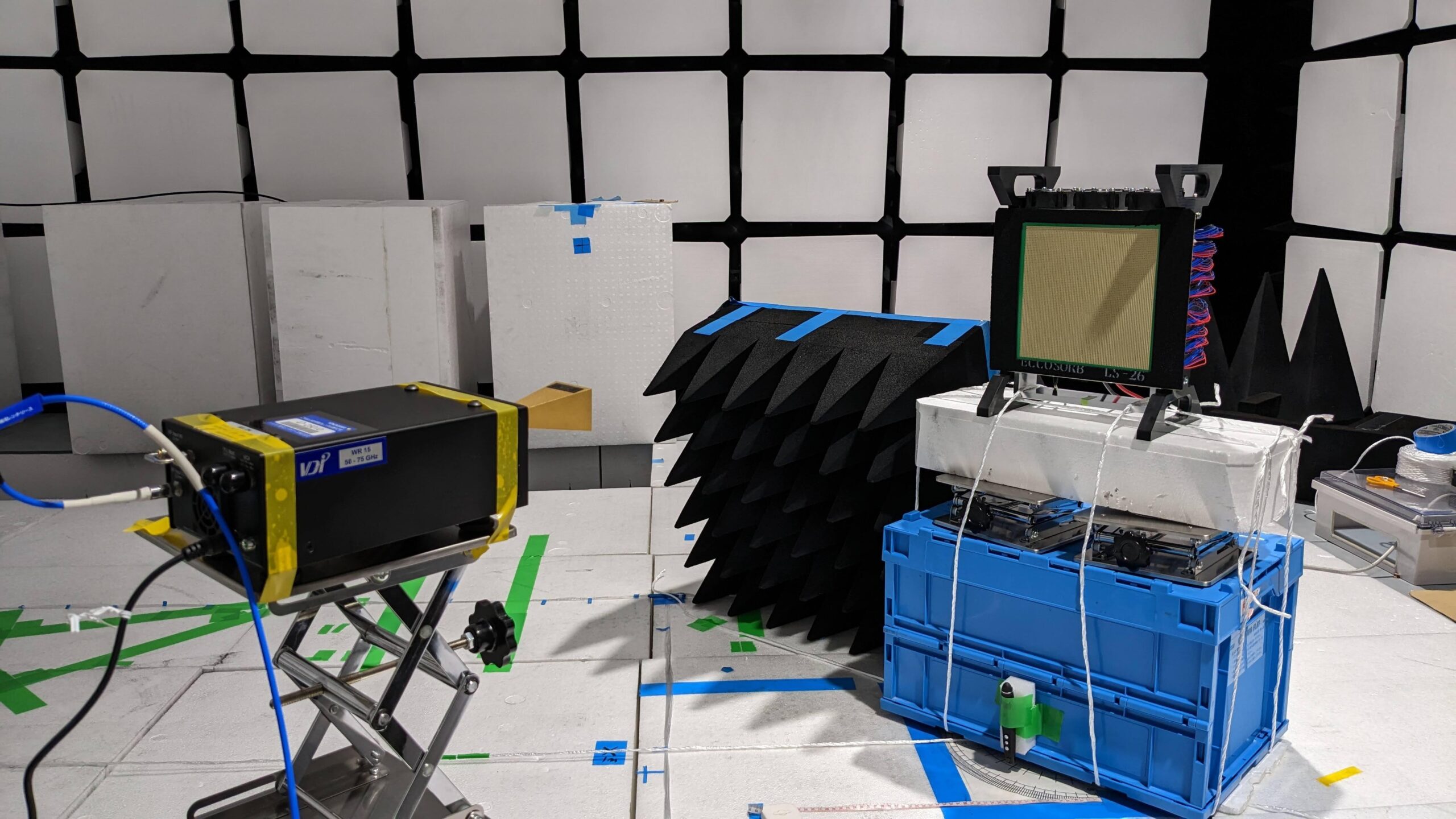
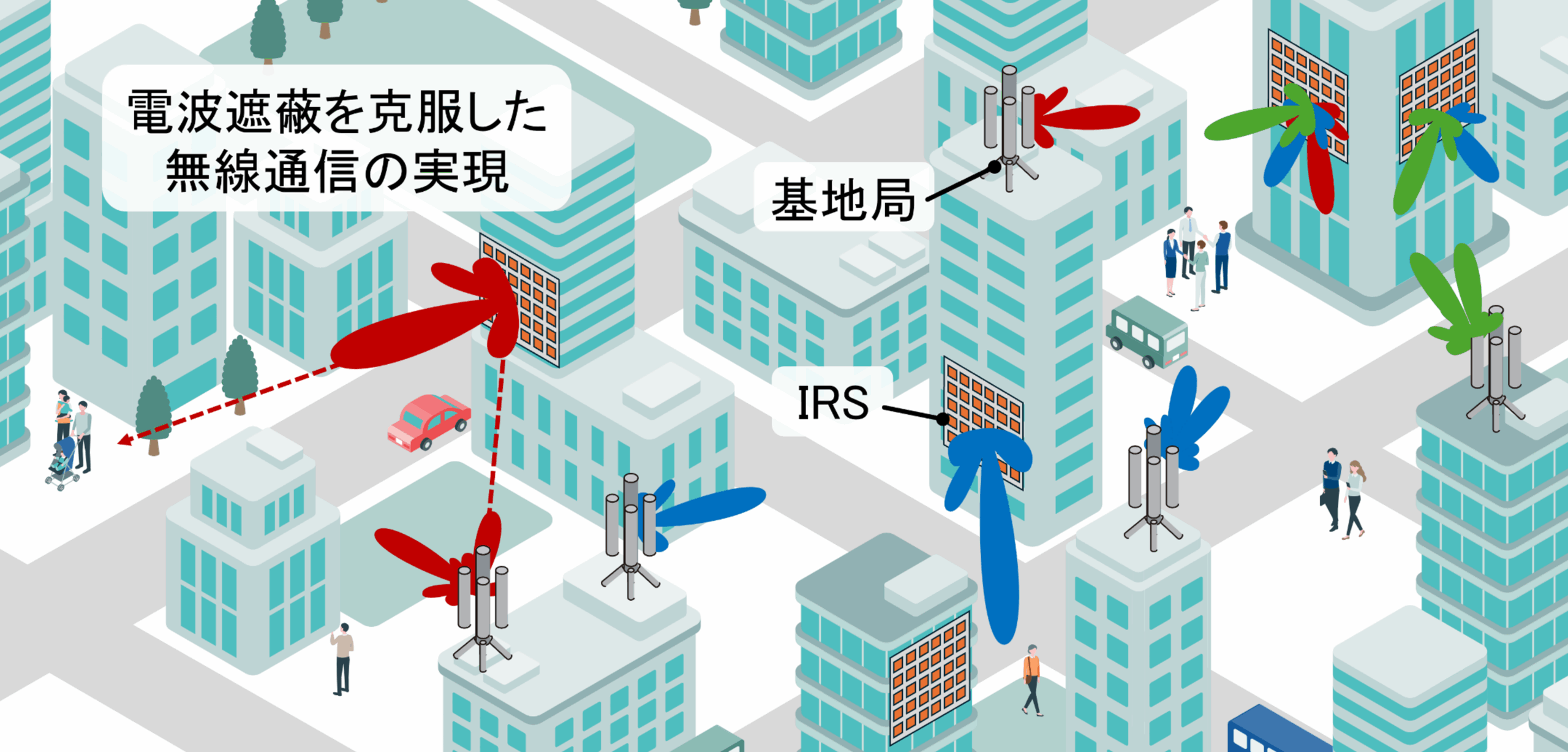
Next-generation wireless LAN
The Internet of Things has greatly diversified the use cases of wireless Local Area Networks (LANs), bringing forth applications with high-capacity communication demands, such as Virtual Reality and video streaming. To constantly provide users of these applications with a strong signal, the densification of access points (APs) has recently attracted investment. However, in high-density AP environments, increased interference between APs and frequent collisions in communication resource competition are more significant, degrading the communication performance. To address these challenges, the IEEE 802.11bn Wireless LANs communication standard, scheduled for adoption in 2028, is considering a technology called Multi-AP Coordination (MAPC). MAPC allows multiple APs to share information and coordinate transmissions, facilitating simultaneous communications between multiple APs and a single terminal, and enabling power adjustment and frequency resource sharing between APs. This leads to high-capacity communications that were previously unattainable with individual AP control. Our research group is working on the development of innovative communication protocols utilizing MAPC for next-generation wireless LANs. By accurately tracking the trends in rapidly evolving communication standards and proactively exploring new theories and algorithms, we are proposing revolutionary solutions and developing cutting-edge technology. Through this research, we are contributing to the development of foundational systems that will support the future of high-speed and stable communications.
Specific research topics are as follows.
- Frequency resource selection considering APs outside the scope of MAPC
- Combination of multiple MAPC functions
- Optimization of group formation in MAPC
- Integration of MAPC and Multi-Link Operation


